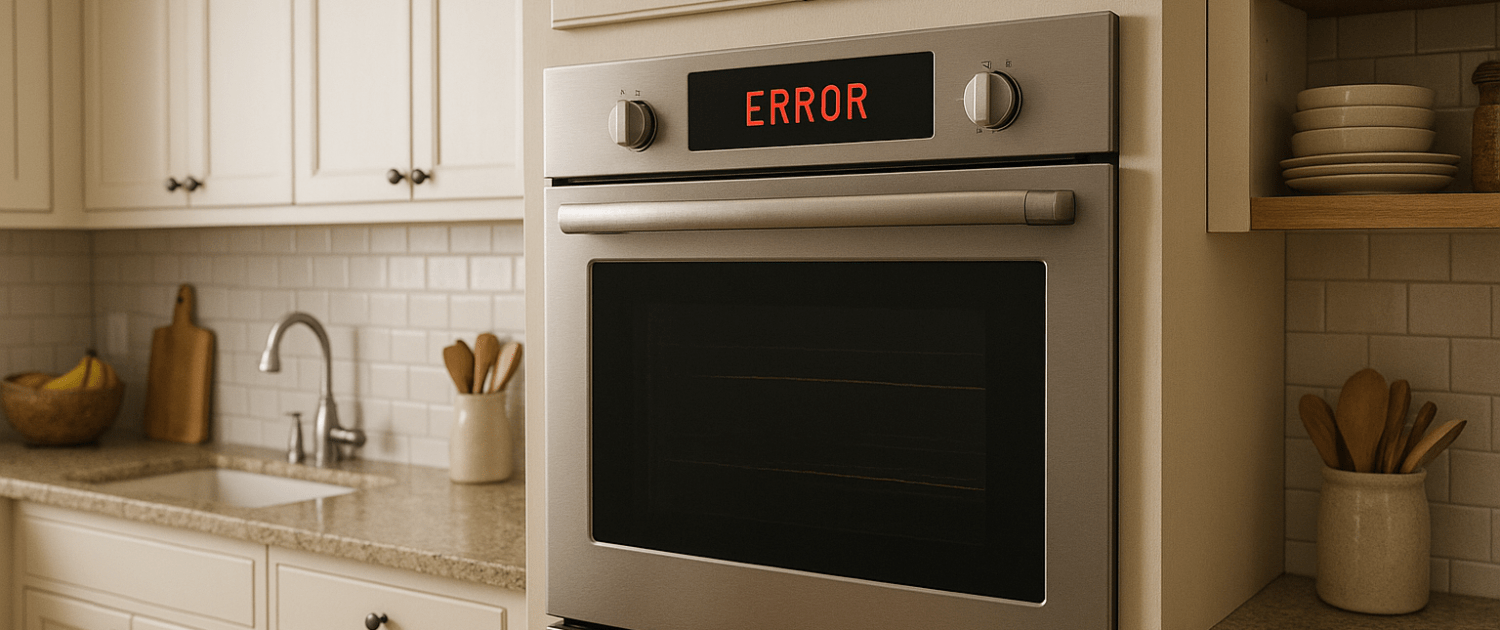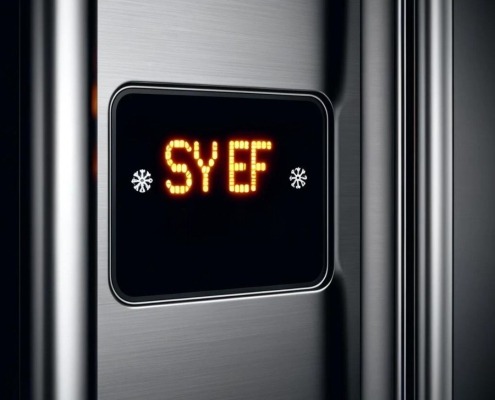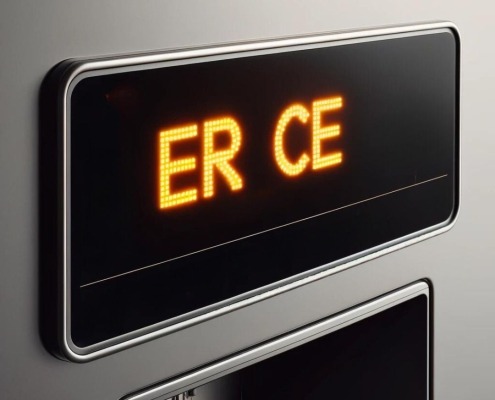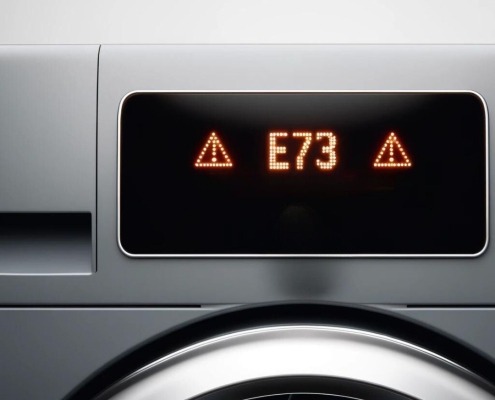How to Fix Bosch Oven Errors F2, F3, F31, F32, F33, and F34
Steven E / Tuesday May 13, 2025
Bosch ovens rely on several sensors to monitor key temperatures and conditions. If an issue arises with one of these crucial sensors, the oven control will display an error code to alert you to the problem. In this guide, we’ll cover each of the Bosch oven sensor errors and provide steps to diagnose and resolve the issue yourself.
If you find out that you need any replacement parts for your appliance while you’re troubleshooting, you can enter your model number at AppliancePartsPros.com to order them. Most orders arrive in just two business days, and we have thousands of free guides to show you how to install your new parts.
The information in this article may not apply to your specific appliance model. We recommend consulting your manufacturer’s documentation or contact us with any questions.
What are error codes?
Bosch oven models have built-in diagnostic programs that continuously monitor the status of components like temperature sensors.
If a sensor malfunctions or loses connection, the control panel will display a fault code that starts with F.
For example, an F2 or F3 error indicates a problem with the oven sensor or the warming drawer respectively.
These sensor codes are extremely helpful for troubleshooting, as they pinpoint exactly which part needs attention.
We’ll go through each oven sensor fault code and explain what it means along with tips to fix the issue.
Safety precautions
When working on any appliance, remember to keep safety first. Here are some tips to keep in mind:
- Always power off and unplug your appliance or switch off the circuit breaker before attempting any maintenance or replacement work. This keeps you safe by preventing any risk of injury from electric shock.
- Wear insulated work gloves to protect your hands from sharp metal parts, pinching hazards and debris.
- Take your time and don’t rush while working to prevent accidents and personal injuries.
- Work in a well-lit area so you can clearly see and access the interior parts.
- Clear your workspace of clutter and other obstacles. Keep children and pets away from the work area.
- Never work on internal parts with bare wet hands. Make sure the work area is completely dry.
- Check your user manual to see if there are specific installation or safety instructions for your part or appliance.
- Be gentle when handling or removing parts. Excessive force might damage the appliance or cause injury.
- Wear safety glasses when working with chemicals, dust or cleaning large debris to prevent injury.
- If the appliance has recently been used, give it plenty of time for any heating parts to cool down before working on it.
- Take pictures or make a note of wiring terminals or other connections before disconnecting to prevent any problems with reassembly.
- When working with wires, avoid touching any exposed wires or terminals. If you need to touch a wire, use a non-conductive tool or wear insulating gloves to prevent electrical shock.
Error F2: Oven temperature sensor failure
The F2 error signifies an issue with the oven temperature sensor that monitors cavity heat.
Typical causes include:
- Loose or damaged wire connections
- Deteriorated sensor probe
- A defective oven control board
Troubleshooting steps
- Thoroughly inspect all connections to the oven temp sensor.
- Verify the sensor plug is securely attached to the oven control board jack.
- Check that sensor wires have no damage and solid connections.
- Remove and reconnect the sensor plug to ensure a tight fit.
- Use a multimeter to check the sensor resistance.
- Unplug the oven or shut off the power.
- Detach the sensor wires from the control board.
- Measure the resistance between the two sensor wires.
- Refer to the exact specs for your oven model, but typically resistance should be around 1,000 ohms at room temperature.
- If resistance is very high or fluctuating, the sensor is faulty and must be replaced.
- If the sensor tests are defective, install a new oven temperature sensor.
- Restore power and test oven operation.
- Enter test mode and check for any error codes.
- Do a test bake and confirm the oven heats to the set temperature.
Error F3: Warming drawer sensor failure
An F3 code signifies a problem with the warming drawer temperature sensor.
Typical causes include:
- Faulty warming drawer sensor
- Damaged sensor wiring
- Bad connection to the control board
Troubleshooting steps
- Make sure the sensor connector is firmly plugged into the control board.
- Check that wires have no damage and solid connections.
- Try removing and re-inserting the sensor connector.
- Use a multimeter to measure the resistance through the sensor.
- Unplug the oven power.
- Detach the sensor connector from the control board.
- Check the resistance between the two connector pins.
- Consult specs for your model, but proper resistance is typically 1,000 ohms at room temperature.
- A faulty reading indicates a defective sensor that needs replacing.
- If the warming drawer sensor tests defective, replace it.
- Restore power and verify proper heating.
- Enter test mode and check for error codes. F3 should not reappear.
- Use the warming drawer and verify accurate temperature regulation.
Error F31: Oven sensor short circuit
The F31 code indicates a short circuit in the oven temperature sensor.
Typical causes include:
- Damage to sensor wiring causing a short.
- Moisture or debris shorting sensor connections.
- Defective oven control board.
Troubleshooting steps
- Unplug the oven power.
- Detach the oven sensor wiring from the control board.
- Connect your multimeter to the sensor wires.
- Resistance should again read around 1,000 ohms.
- If resistance still measures very low, the sensor itself has an internal short and must be replaced.
- If resistance is normal with the sensor detached, wiring may be shorted.
- Thoroughly inspect sensor wiring for damage that could cause a short circuit.
- Repair or replace damaged wiring if found.
Error F32 – Open vircuit in oven sensor
An F32 code indicates an open break in the oven temperature sensor circuit.
Typical causes include:
- Loose sensor connections
- Damaged sensor wiring
- Defective oven sensor probe
Troubleshooting steps
- Check oven sensor connections.
- Make sure the sensor plug is fully seated in the control board jack.
- Check for loose or burnt wires at sensor connections.
- Remove and re-insert the sensor plug.
- Inspect sensor wiring for damage.
- Look for broken wires or damaged insulation.
- Repair or replace wires if damage is found.
- If connections are good and the wiring is intact, the oven sensor is likely defective.
- Replace the sensor with a new Bosch part specific to your model.
- Reconnect wiring and test oven operation.
Error F33: Warming drawer sensor short circuit
The F33 code indicates a short circuit in the warming drawer sensor.
Typical causes include:
- Damaged sensor wiring caused a short
- Moisture in sensor connections
- Defective warming drawer control board
Troubleshooting steps
- Unplug the oven power supply.
- Detach the warming drawer sensor wiring.
- With the sensor separated from the wiring, recheck resistance.
- If the reading is still very low, the sensor itself has an internal short and must be replaced.
- If resistance is normal, the wiring may be shorted.
- With the sensor detached, inspect the wiring for damage that could cause a short circuit. Repair or replace damaged wires.
- If the warming drawer sensor still has a short circuit when disconnected from the wiring, replace it.
Error F34: Open circuit in warming drawer sensor
The F34 code signifies an open break in the warming drawer sensor circuit.
Typical causes include:
- Loose sensor connections
- Damaged sensor wiring
- Defective warming drawer sensor
Troubleshooting steps
- Make sure the sensor connector is fully inserted into the control board jack.
- Check for any loose or burnt wires at sensor connections.
- Check warming drawer sensor wiring for damage.
- Look for broken or cut wires causing an open break in continuity.
- If connections are secure and the wiring is intact, the sensor itself is likely faulty.
- Replace the warming drawer sensor with the correct Bosch part for your oven model.
- Reconnect wiring and verify proper heating regulations.
Additional information
Thank you for reading! We hope you found this information useful to get your oven working again.
If you have any other appliance repair needs or projects, don’t hesitate to explore our thousands of free videos and troubleshooting guides available. If you need replacement parts or some extra help, grab your model number and head over to AppliancePartsPros.com, where you can chat with a pro, order parts, read our DIY blog, and more.
Be sure to subscribe to us on YouTube and follow us on Facebook, Twitter, and Instagram!
With nearly a decade of experience in providing top-notch customer service regarding appliance parts and repair, Steven enjoys sharing practical advice, troubleshooting tips, and interesting information to help readers stay informed.





